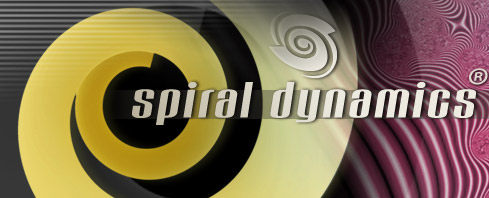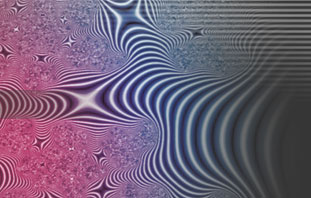|
FAQs > Questions Relating
to Politics
Is terrorism "Red?"
Terrorism, currently defined as a global force, is not a product of the CP (Red) system. Think about it. What is the likelihood that someone centralized at the third, egocentric level will have the focus on a cause or strategic sense to plot a significant terror event? Extended timeline? Consequential thinking?
Self-sacrifice to be a suicide bomber? Multinational networking?
(We do not include organized thuggery and the mayhem of insurgent mobs
as terrorism. The onset of warlords and criminal gangs without
political intent is not, by our definition here, terrorism. The terror
caused by rampaging child soldiers and plundering gangs is undeniable
in places ranging from Congo and Mozambique to terrified urban centers
in the west; but it is criminality rather than terrorism. Some of this
activity relies on BO magic and superstition, family-like group ties,
and unquestioning loyalty to a dominant, often mystical leader. Some
is rooted in CP impulsivity, guiltlessness, and hedonistic drives to
exhibit power. This phase is sometimes the follow-on to a social or
political movement gone awry, the violent dregs of an ideology lost in
translation to plunder. Horrific as it is, though, this is not
terrorism.)
This misattribution is a serious blunder because it diverts attention from where the dangers do lie—in fanatical DQ (authoritarian aggression of various stripes) and even in cutthroat ER leveraging for competitive position by using expendable surrogates to capture resources and markets.
This is a conflict in both memes and vMEMEs.
Terrorism is an extension of absolutistic beliefs and competition for social dominance. Rather than clashing civilizations, it is usually a product of clashing memes, frequently in very similar vMEME containers, though the rivalry of vMEMEs, especially between DQ and surging ER (with the transitions), is often at the deepest level.
People say terrorism is "Red" because it involves violence, and this characteristic is often erroneously attributed exclusively to the CP (Red)
system by people who only grasp the Spiral model superficially. The fault with this analysis is the single-cause complex equivalence: terrorism is violent; Red is violent; therefore, terrorism is Red.
The key learning here is that violence and aggression are not the
exclusive domain of CP; there are many reasons and justifications for
them.
Violence can come from a number of systems: BO tribal conflict, CP
predation and intimidation, DQ righteous indignation and retribution, ER exploitive
domination and expansion. Even ER/fs liberation activism can take a seemingly aggressive and even violent turn, especially when confronted by mismatched responses. Consider some cp/DQ for the assassin or “hit man,” or even grandiose and egocentric cult
leader who can lead followers to destruction; but don't be confused by that as terrorism—it is an exception.
Likewise, the suicide bomber is more likely acting for a deferred reward, out of desperation and anger at failures to successfully enter ER (thus a regression to Gamma), or from a sense of higher calling and purpose, than for anything
someone centralized at CP could grasp. Even if the quest for heroic status and to live on in the mouths of men is present, look for a strong DQ component of self-sacrifice for a cause and higher purpose—theological, ideological, or even survival of the family and neighborhood against an "enemy" force. Again,
Red is not enough.
The question one always needs to ask is "why did they choose this approach?" Terrorism
often requires a great deal of planning, something which simply isn't a characteristic of those centralized in CP (Red). They are impulsive and oriented to the short term and immediate gratification. They might cheer terrorism, but not plan it. They might claim "credit" without involvement. Consequential thinking hasn't yet emerged. Guilt isn't there, and shame is central, so risks of dealing with such people in an organization requiring secrecy are high. These are the very ones terrorist organizations work actively to exclude because they are too unpredictable and dangerous to the long-term health, stability and goals of
a movement.
Terrorism requires one to subsume self in the identity and objectives of an organization,
whether real or virtual, usually outlining a clear political and ideological outcome larger than the self—a higher calling or mission in life to battle "evil" and an evil force, if you will. Note the polarized, dichotomized thinking rooted in beliefs—characteristic of DQ. (See
Terror in the Mind of God: The Global Rise of Religious Violence by Mark Juergensmeyer.) The other side of the terrorist coin is the ER minds that strategize, organize, network, equip and plan
operations behind the scenes. Ask the question: Who gains? Who wins what? What is in play?
What's the long-term strategic outcome? There's often far more of the ER present than one might realize, and people who are new to Spiral Dynamics often confuse the
tough and cold-blooded side of ER with CP.
People with a heavy dose of CP (Red) live in a world of "it's all about me" without an ideology—higher purpose loops back into self. They live in a world of raw dominance and control rather than an existence focused on a greater "good"—whatever that might be. Putting the organization and its beliefs before their own desires is not characteristic of the CP system. Therefore, any efforts to deal with terrorism and terrorists as CP (Red) thinkers—overwhelming shows of force, for example—will result in escalation and protraction of conflict since a CP (Red) approach would be a mismatch to the worldview more localized in DQ absolutes and good/evil, ally/evildoer, friend/enemy polar perspectives.
Instead, the causes that stimulate DQ indignation and ER rivalry via surrogates must be recognized so the root causes, rather than the symptoms and their acolytes, are dealt with in ways appropriate to those systems; then terrorism becomes a progressively less viable strategic tool.
The meme is made less sticky.
To mush all of the energies together—cp through DQ and through exiting ER—as if they are one Red thing is to confuse the remedies and miss a key point of Spiral Dynamics: people do the same thing for different reasons, and people who appear very much the same can do very different things. Those serious about dealing with terrorism long-term had best understand closed DQ, DQ versus DQ, DQ versus ER, ER versus DQ, and ER versus ER very well, for it is from those levels that the ideological and strategic intentions flow rather than from CP which is a matter for law enforcement of appropriate scale.

Click here for a link to "What
do you think about President Bush's war and the 'rapid successful
democratization of Iraq?'"
|


